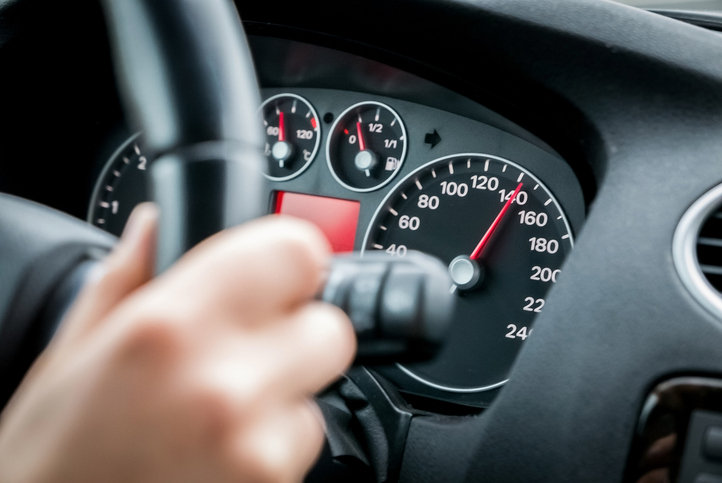News
California Governor Vetoes Bill Calling for Speed-Warning Devices in All Cars

The European Union requires all new vehicles to include speed-warning devices. California was ready to follow suit, but Gov. Gavin Newsom felt the law conflicted with federal safety efforts.
UPDATE 9/30/24: California governor Gavin Newsom vetoed SB 961 on September 28, 2024. The bill attempted to mandate the use of speed-warning systems in most new vehicles sold in California. Newsom explained in his veto announcement that the National Highway Traffic Safety Administration (NHTSA) "already regulates vehicle safety standards, and adding California-specific requirements would create a patchwork of regulations that undermines this longstanding federal framework." He went on to say that NHTSA is "actively evaluating intelligent speed assistance systems, and imposing state-level mandates at this time risks disrupting these ongoing federal assessments."
From the September/October 2024 issue of Car and Driver.
Exceed the speed limit in one of the 27 European Union countries, and you may get some pushback from your vehicle. As of July, new cars sold in the EU must include a speed- warning device that alerts drivers if they exceed the posted limit. At a minimum, vehicles must include acoustic or haptic speed warnings, though the European Commission gives automakers the latitude to supplant those passive measures with either an active accelerator pedal that applies counterpressure against the driver's foot or a governor that restricts the vehicle's speed to the legal limit. Drivers can override or deactivate these admonishments, but the devices must default to their active state at startup.
Coming to California for 2030?
Now California is looking to emulate the EU with legislation that would mandate in-car speed-warning devices. The bill, SB 961, aims to make such systems standard in the Golden State by requiring just about every 2030 model-year vehicle equipped with either GPS or a front-facing camera to also have visual and audio warnings when driving more than 10 mph over the speed limit. Provisions within the bill would ensure that drivers can fully disable the systems.
Those championing the technology argue that it could save lives—consider that in 2022, 18 percent of the passenger-vehicle drivers, or 8236 people, involved in fatal crashes in the U.S. were speeding, according to NHTSA. Yet even safety advocates struggle to believe that the regulations as written can do much good. Graziella Jost, who serves as projects director at the European Transport Safety Council and managed a campaign that helped lead the charge for speed-warning technology, finds the EU's—and, by extension, the California bill's—minimum requirements for the systems to be lacking.
Jost notes that the European Transport Safety Council's own testing indicates that drivers generally find an audible warning irritating, making it likely they will shut off such systems. Then there's the problem of using camera-based sign-recognition technology to suss out speed limits. Jost points out the middling reliability of such a setup given that its capabilities are conditional on physical speed-limit signs—postings that can pop up irregularly or be obscured by traffic or the surrounding environment. The systems are also prone to misinterpreting more complex speed-limit signs, such as those in school zones that apply only during certain hours of the day or conditional speed signage that varies for differing vehicle types.
Ultimately, what the EU has implemented, and California's bill advocates for, stands to annoy drivers more than deter them from speeding.
Article source: https://www.caranddriver.com/news/a62225420/car-speed-warning-devices/
Author: Greg S. Fink, Senior Editor, Car and Driver